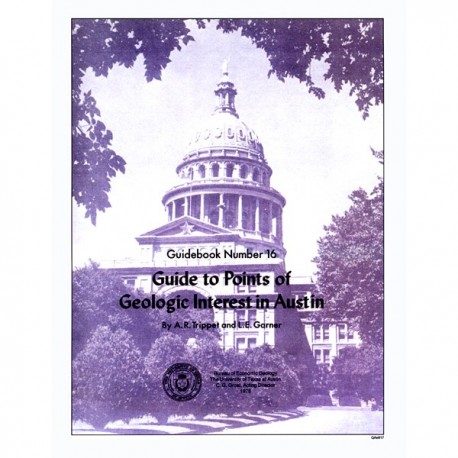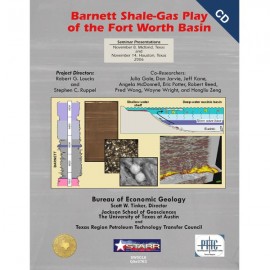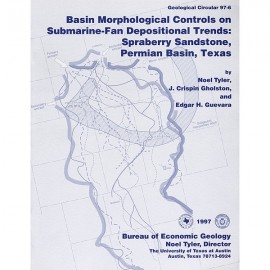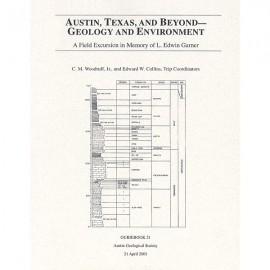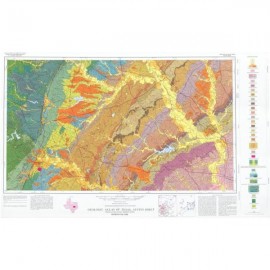Guidebooks
-
Books & Reports
- Reports of Investigations
- Guidebooks
- Udden Series
- Geological Circulars
- Down To Earth
- Atlases of Major Oil and Gas Reservoirs
- Texas Memorial Museum Publications
- Environmental Geologic Atlas of the Texas Coastal Zone
- Mineral Resource Circulars
- Other Reports
- Seminars and Workshops
- Handbooks
- Submerged Lands of Texas
- Symposia
- Annual Reports
- Open File Reports
-
Maps & Cross Sections
- Thematic Maps
- Miscellaneous Maps, Charts & Sections
- Geologic Atlas of Texas
- STATEMAP Project Maps
- Geologic Quadrangle Maps
- Cross Sections
- Highway Geology Map
- Energy and Mineral Resource Maps
- Shoreline Change and Other Posters
- Wilcox Group, East Texas, Geological / Hydrological Folios
- Bouguer Gravity Atlas of Texas
- River Basin Regional Studies
- Featured Maps
- Posters
- Teachers & the Public
-
Geological Society Publications
- Gulf Coast Association of Geological Societies
- Alabama Geological Society
- Austin Geological Society
- Corpus Christi Geological Society
- Houston Geological Society
- Lafayette Geological Society
- Mississippi Geological Society
- New Orleans Geological Society
- South Texas Geological Society
- GCS SEPM Publications
- Historic BEG & UT Series
Guide to Points of Geologic Interest in Austin
GB0016
Guide to Points of Geologic Interest in Austin, by A. R. Trippet and L. E. Garner. 38 p., 23 figs., 1 table, 1 color plate, 1976. ISSN: 0363-4132. Print
"This guidebook was written as an informal guide to 35 geological sites in the Austin area. The first section of the guidebook is a road log for a field trip to 10 localities covering a variety of topics. Following the road log is a list of 25 additional sites, located and described so that a field trip can be planned around a particular geological topic of interest.
Limited exposures of Tertiary strata overlie Cretaceous units in the southeast quadrant of the map "Geologic Map of the Austin Area, Texas" (in pocket). Alluvial deposits locally overlie Cretaceous and Tertiary bedrock units in the vicinity of the Colorado River and its tributaries.
The most prominent geologic feature in the Austin area is the Balcones fault zone, which is responsible for the most prominent topographic feature, the Balcones Escarpment. Gently dipping Cretaceous units are broken and displaced down to the southeast by normal faults in the northeast trending Balcones fault zone. Maximum displacement of the largest fault (Mount Bonnell fault) is about 600 feet. Movement on smaller faults ranges from about 150 feet to less than 10 feet, with most faults displaced less than 50 feet. Total displacement across the fault zone is about 1,200 feet. Most of the movement in the Balcones fault zone occurred during Miocene time. No movement has been detected during modern times."
Citation:
Trippet, A. R., and Garner, L. E., 1976, Guide to Points of Geologic Interest in Austin: The University of Texas at Austin, Bureau of Economic Geology, Guidebook 16, 38 p.
